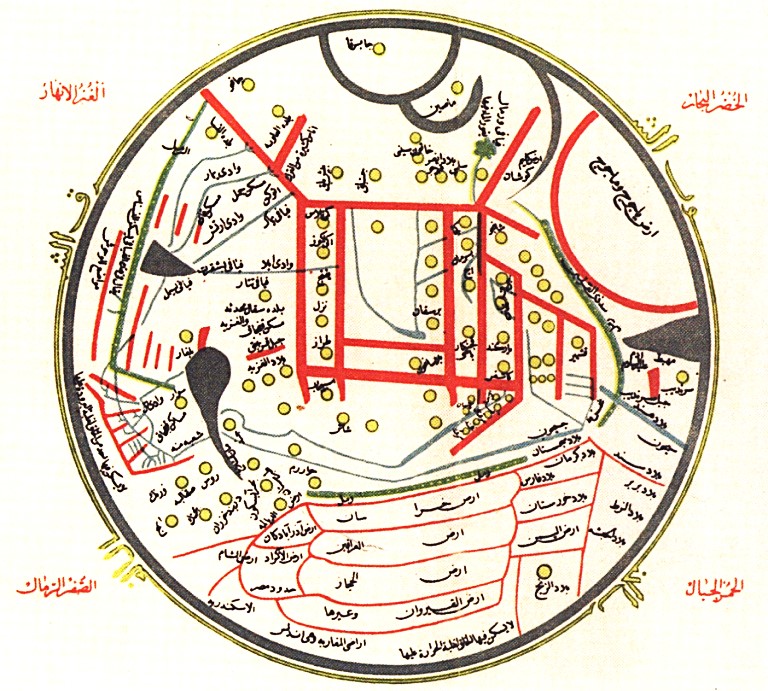Information about the Bashkirs before the Mongol conquest
Research Article
Keywords:
Turks, Bashkortostan, ethnogenesis of Bashkirs, Ural-Volga region, Ibn Fadlan, Mahmud Kashgari, dictionary of Turkic languagesAbstract
The history of the ethnogenesis of peoples constantly arouses great interest among researchers. The first written mentions of the ethnic group, information concerning their way of life, and descriptions of places of settlement help to reveal the stages of the formation of the people and reveal the full picture of ethnic history. A number of world-famous scientists have paid great attention to the history of the origin of the Bashkir people. This issue is examined in many ways in the works of leading researchers of the history and ethnogenesis of the Bashkirs, such as R.G. Kuzeev, N.A. Mazhitov, S.I. Rudenko, A.-Z.V. Togan. Based on the information contained in the works of medieval authors, in other well-known written sources, and archaeological research materials, the aforementioned scientists have studied various important stages of the development of the ethnic group. To study the geography of the settlement of the ancient Bashkir clans, the scientists have drawn on a wide range of Chinese, Arabic, Persian, and other sources. In this article, the analysis of the main views of leading scientists on the places of Bashkir settlements is made using the comparative historical method. Widely known published sources are used. They are the work of the Arab traveler Ibn Fadlan (10th century) and the dictionary of the Turkic languages of Mahmud Kashgari (11th century). The travel diary of Ibn Fadlan contains the earliest, detailed information about the language, customs, and places of settlement of the Bashkirs. The descriptions of the Arab traveler show that at the beginning of the 10th century, the majority of the Bashkirs, who were one of the Turkic ethnic groups, adhered to traditional beliefs. However, one of the guides accompanying their delegation was a Bashkir of the Muslim faith. In the notes of Ibn Fadlan, the hydronyms are clearly recorded, allowing us to outline the boundaries of residence of various ethnic groups. It should be noted that the Bashkir lands he described are still inhabited by Bashkirs who have retained the hydronym names used at that time. Ibn Fadlan's work clearly outlines the western boundaries of the Bashkir clans. Another important written source is the "Dictionary of Turkic Languages" by Mahmud Kashgari, which contains clear information about the languages of the largest Turkic clans. It contains descriptions of the Bashkir language, which is the closest to the Kipchak language. It is commonly known that the Bashkir language is included in the Kipchak subgroup of Turkic languages according to the generally accepted modern classification of Turkic languages, even at present. It is noteworthy that the dictionary contains a map of the settlement of the Turkic peoples, which is also accompanied by a text description in question. According to M. Kashgari, the Bashkirs lived West of the Irtysh River. Thus, the sources considered allow us to say that the Bashkirs lived in the territory between the Volga and the Irtysh, including the Southern Urals, before the period of conquests of Genghis Khan.
Downloads
References
Atlas narodov Bashkortostana. Istoriko-kartograficheskoe izdanie / R.R. Asylguzhin, Yu.M. Yusupov, A.T. Berdin, G.R. Kamalova, L.Kh. Samsitova, E.S. Danilko, M.A. Pilipak, T.M. Ayupov, M.V. Murzabulatov. Ufa: Samrau Publ. 2023. 149 p. (in Russian).
Garustovich G.N. Chiyalikskaya arheologicheskaya kul'tura epohi srednevekov'ya na Yuzhnom Urale. Ufa archaeological bulletin. 2015. Is.15, рp. 181–198. (in Russian).
Istoriya Bashkortostana s drevnejshih vremen do 60-h gg. 19 v. Ufa: Kitap Publ.1996. 520 p. (in Russian).
Kashgari Mahmud. Divan lugat at-turk (Svod tiurkskikh slov): v 3 t. Рer. s arab. A.R. Rustamova ed. I.V. Kormushin, approx. I.V. Kormushina, E.A. Potseluevsky, A.R. Rustamov; In-t vostokovedeniia RAN; In-t iazykoznaniia RAN. Moscow: Oriental Literature Publ. 2010. Vol.1. 461 p. (in Russian).
Kovalevskij A.P. Kniga Ahmeda Ibn Fadlana o ego puteshestvii na Volgu v 921-922 gg. Stat'i, perevody, kommentarii. Kharkov: Publishing House of the Kharkov Order of the Red Banner of Labor of the Gorky State University. 1956. 348 p. (in Russian).
Kuzeev R.G. Proiskhozhdenie bashkirskogo naroda. Etnicheskij sostav i istoriya rasseleniya. Moscow: Nauka Publ. 1974. 571 p. (in Russian).
Mazhitov N.A. Yuzhnyj Ural v VIII–XIV vv. Otv. red. A.K. Ambroz. 2-e izd. Red. I.I. Bakhshiev. Ufa: Belaya Reka Publ. 2023. 240 p. (in Russian).
Mazhitov N.A., Sultanova A.N. Istoriya Bashkortostana s drevnejshih vremen do XVI v. Ufa: Kitap Publ. 1994. 360 p. (in Russian).
Psyanchin A.V. Bashkortostan na staryh kartah: istoriya geograficheskogo izucheniya i kartografirovaniya. Ufa: Gilem Publ. 2001. 161 p. (in Russian).
Rudenko S.I. Bashkiry: Istoriko-etnograficheskie ocherki. Ufa: Kitap Publ. 2006. 376 p. (in Russian).
Togan A.V. Başҡorttar tarihy (avtor ҡuläҙmahynan tärjemä). Tulylandyrylğan 2-se baҫmahy. Ufa: Kitap Publ. 2005. 304 p. (in Bashkir).

Downloads
Published
Issue
Section
License
Copyright (c) 2025 A. Salikhov

This work is licensed under a Creative Commons Attribution-NonCommercial-NoDerivatives 4.0 International License.


